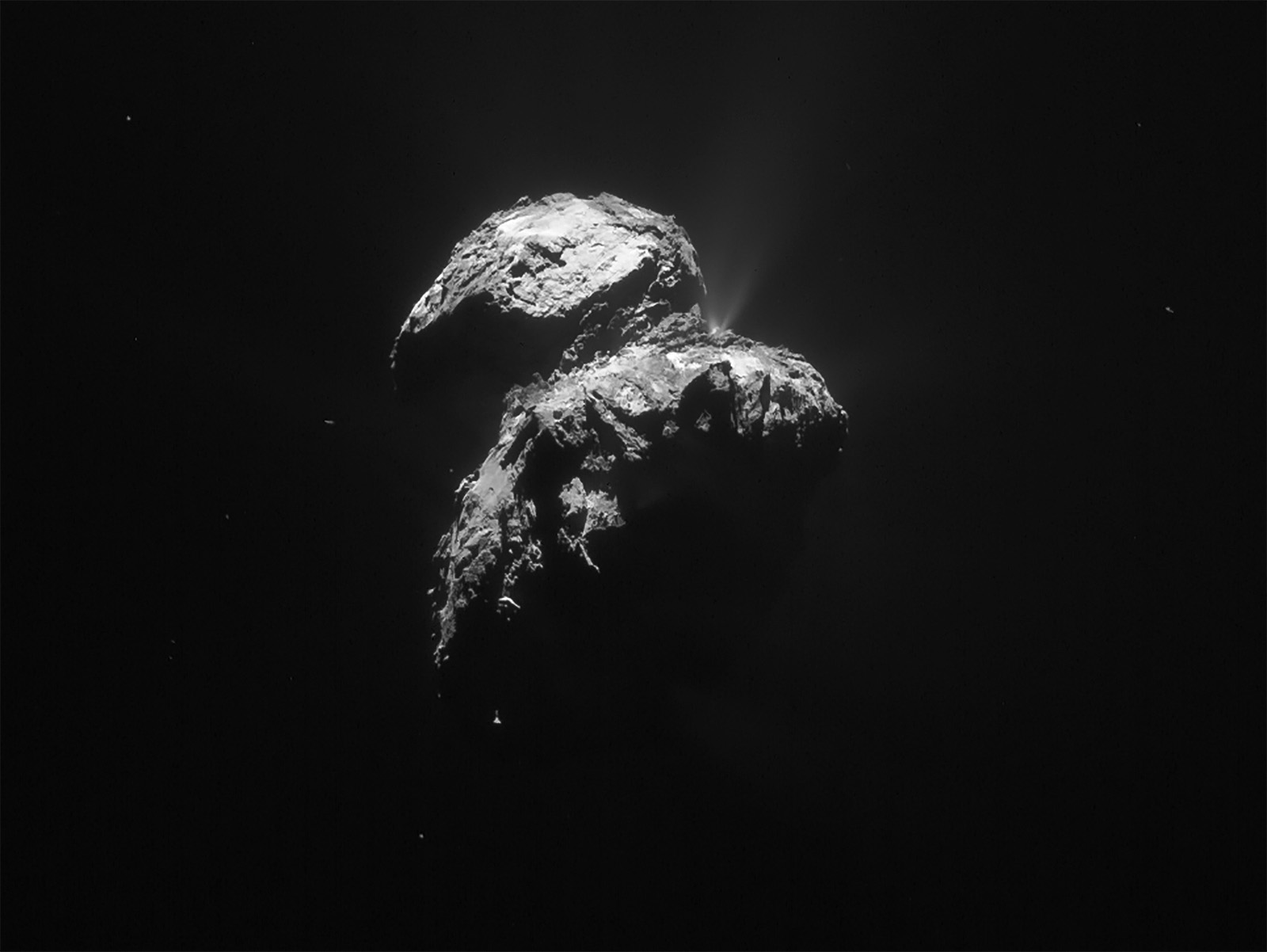Just when do comets get their signature coma? Conventional wisdom says it only happens when they get close enough to the sun, but new research suggests it starts when they are still beyond the orbit of the planets.
When comets come within roughly the orbit of Jupiter, the heat from the sun causes any frozen water to sublimate. That process turns the ice into a vapor, which envelopes the comet and eventually stretches behind the nucleus in a tail that can reach for millions of kilometers – making for a delightful nighttime show for any skywatchers here on Earth.
But some comets, like C/2017 K2, are active, despite sitting twice as far as Jupiter from the sun. Observations of this comet have revealed dust grains continuing to surround the nucleus – a distinct halo powered by some sort of internal activity.
A team of astronomers examined C/2017 K2 in more detail, following the comet as it traveled inwards from a distance of 16 AU to 9 AU, as reported in a paper recently appearing in the preprint journal arXiv. They found that as the comet drew closer to the sun, its rate of mass loss rate climbed to upwards of 1,000 kilograms every second.
Stranger still, given the abundance of dust around the nucleus and the speed that the dust was moving away from the comet, it must have ejected that dust when it was much, much further from the sun: more than 35 AU, beyond the orbit of Neptune and in the Kuiper Belt.
The authors suspect that as the comet began to approach within 35 AU, it became warm enough for frozen carbon monoxide to sublimate, driving away the dust and particles that continue to surround it.
These findings confirm just how difficult it is to predict cometary paths, especially when they are still so distant from the sun. A variety of processes can make subtle changes to a comet’s orbit, leading to drastic differences in its final trajectory. If we ever hope to have better comet tracking capabilities, we need to understand complex physical processes like this one.


It’s difficult for me to comprehend “Mass loss rates in dust at 10 AU are of order 1000 kg/s.” That’s a ton per second!
86,400 seconds per day equates to about 190,000 pounds or 95 tons. That’s 35,000 tons a year.
How big are these comets?